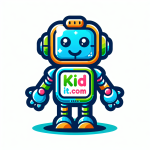The Advantages of Teaching Children Multiple Coding Languages
In todays digital era, coding has become an essential skill for everyone, including children. It empowers them to understand and create technology, preparing them for the future job market. It is crucial for children to learn multiple coding languages as it offers numerous advantages that will benefit them in their academic and professional lives. As an organization that offers tech education and resources for children, we understand the importance of teaching kids multiple coding languages and how it can positively impact their learning and development.
1. Comprehensive Understanding of Coding Concepts
Teaching children multiple coding languages allows them to gain a comprehensive understanding of coding concepts. Each programming language has its own unique features and syntax, which help children grasp different programming techniques and approaches. By learning multiple coding languages, children can compare and contrast the similarities and differences, enabling them to develop a deeper understanding of how coding works. This holistic approach helps children become more versatile programmers and problem-solvers.
2. Improved Problem-Solving Skills
Learning multiple coding languages also enhances childrens problem-solving skills. Different coding languages require different problem-solving approaches and algorithms. By exposing children to various coding languages, they can learn to think creatively and analytically to solve complex problems. This process not only improves their coding skills but also helps them develop critical thinking and decision-making abilities. These skills are invaluable in both academic and real-world settings, providing children with a competitive edge in their future careers.
3. Increased Adaptability and Flexibility
Teaching children multiple coding languages fosters adaptability and flexibility in their learning. In the rapidly evolving field of technology, new programming languages and frameworks emerge regularly. By mastering multiple coding languages at a young age, children can easily adapt to new coding trends and technologies. This adaptability allows them to stay ahead of the curve and tackle any coding challenge that comes their way. Additionally, children who are proficient in multiple coding languages are more employable and can pursue diverse career opportunities in the tech industry.
4. Enhanced Communication and Collaboration
Learning multiple coding languages also improves childrens communication and collaboration skills. Coding is often a collaborative process, requiring team members to work together to develop complex software applications. When children are proficient in multiple coding languages, they can effectively communicate with their peers and contribute to projects that involve different programming languages. This collaboration helps them build strong teamwork and interpersonal skills, essential for success in the tech industry and beyond.
5. Preparation for Advanced Studies and Specializations
Teaching children multiple coding languages prepares them for advanced studies and specializations in computer science and related fields. As children progress in their coding journey, they may develop a passion for a specific programming language or area of technology. By exposing them to different coding languages early on, they can explore various disciplines and narrow down their interests. This foundation allows them to pursue specialized courses or certifications in specific programming languages or technology domains, setting them up for a successful career in a niche area of tech.
6. Cultivation of Creativity and Innovation
Lastly, teaching children multiple coding languages cultivates their creativity and innovation. Coding is a form of creative expression, allowing children to bring their ideas to life through programming. By learning multiple coding languages, children can experiment with different coding techniques and styles, unleashing their creativity and imagination. This creative freedom fosters innovation and encourages children to think outside the box, leading to the development of unique and groundbreaking technological solutions.
In conclusion, teaching children multiple coding languages offers a wide range of advantages that contribute to their overall learning and development. It equips them with a comprehensive understanding of coding concepts, improves their problem-solving skills, enhances their adaptability and flexibility, strengthens their communication and collaboration abilities, prepares them for advanced studies and specializations, and cultivates their creativity and innovation. As an organization that provides tech education and resources for children, we believe that teaching kids multiple coding languages is crucial for preparing them for success in the digital age. By empowering children with these valuable skills, we can shape the future generation of programmers and innovators who will drive technological advancements and make a positive impact on the world.


leave a comment